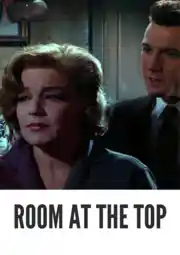Contact: [email protected]
Video Sources 0 Views

Synopsis
[ez-toc]




Introduction
In the realm of old films, where black-and-white images often define the cinematic landscape, the colorization of classics can breathe new life into timeless tales. “Room at the Top Colorized (1959),” a British drama based on John Braine’s novel, stands as a prime example. In this article, we delve into the making of this iconic film, exploring its plot, historical significance, critical acclaim, and the unique experience offered by its colorized version.
Read Media File Transfer Agreement: Terms and Conditions
Read FAQ
The Making of Room at the Top Colorized (1959)
“Room at the Top Colorized (1959)” emerged as a cinematic gem directed by Jack Clayton, adapted from John Braine’s novel by Neil Paterson. The film featured the brilliant performances of Laurence Harvey as Joe Lampton and Simone Signoret as Alice Aisgill. A notable production during its time, it marked a significant shift in the portrayal of post-war Great Britain within the British New Wave cinema movement.
John Braine’s source material provided a compelling narrative that explored the ambitions and relationships of its characters. Jack Clayton’s directorial prowess brought this tale to life, establishing “Room at the Top” as a noteworthy entry in British cinema.
Exploring the Plot of Room at the Top Colorized (1959)
At its core, “Room at the Top Colorized” revolves around Joe Lampton, a young and ambitious man determined to climb the social ladder in the town of Warnley. As he navigates his way through relationships with the beautiful Susan Brown and the enigmatic Alice Aisgill, the film delves into themes of class struggle, ambition, and the consequences of pursuing one’s desires.
The intricate plot weaves a narrative that resonates with viewers, making “Room at the Top” a compelling exploration of human nature and societal expectations in post-war Britain.
The Historical Significance of Room at the Top (1959)
Set against the backdrop of post-war Great Britain, “Room at the Top” captures the societal shifts and struggles of the time. The film’s portrayal of the era aligns with the kitchen-sink realism prevalent in British cinema during the late 1950s and early 1960s. As a representative of the British New Wave, the film adds a layer of historical significance to its narrative, offering viewers a glimpse into the challenges faced by individuals in a rapidly changing society.
Critical Acclaim and Awards
The critical acclaim garnered by “Room at the Top” was reflected in its recognition at the Academy Awards. Nominated in various categories, the film secured victories for Simone Signoret, winning the coveted Best Actress award, and Neil Paterson, who received the accolade for Best Adapted Screenplay. These accolades solidified the film’s position as a cinematic masterpiece and highlighted the exceptional contributions of its cast and crew.
The Art of Colorization and Restoration
As technology advances, the debate surrounding the colorization of black-and-white films continues. “Room at the Top Colorized (1959)” has not escaped this trend, and its colorized version introduces a new dimension to the viewing experience. The meticulous process of colorization not only preserves the historical essence of the film but also enhances its visual appeal for contemporary audiences.
Film restoration, a crucial aspect of preserving cinematic heritage, complements the colorization process. By restoring old movies, we ensure that future generations can appreciate the craftsmanship and storytelling of bygone eras in all their visual splendor.
Room at the Top Colorized (1959) as a Timeless Classic
Despite the passage of time, “Room at the Top Colorized (1959)” remains a timeless classic that transcends its original context. The film’s exploration of universal themes, coupled with its powerful performances, continues to resonate with audiences. Its impact on British cinema endures, influencing subsequent generations of filmmakers and cementing its status as a hallmark of the kitchen-sink realism genre.
Experiencing the Colorized Version
The advent of colorization technology provides a unique opportunity for viewers to revisit classic films in a fresh light. The colorized version of “Room at the Top Colorized (1959)” enriches the visual experience, offering a vibrant perspective on the film’s narrative. While purists may argue for the authenticity of the original black-and-white presentation, the colorized version invites audiences to appreciate the story from a contemporary standpoint.
Legacy and Influence on Cinema
“Room at the Top Colorized (1959)” didn’t just end with its initial success; it paved the way for subsequent kitchen-sink realism film dramas. The film’s impact resonated in its sequel, “Life at the Top” (1965), further solidifying its place in cinematic history. The influence of “Room at the Top Colorized” echoes through the years, inspiring filmmakers to explore the complexities of human relationships within the socio-political landscape.
Preserving and Celebrating Film Classics Through Colorization
The debate surrounding the colorization of old films often revolves around the balance between artistic choice and historical preservation. “Room at the Top (1959)” colorized exemplifies the delicate equilibrium between the two. While some may argue for the purity of the original black-and-white format, colorization opens doors for a broader audience to appreciate the cinematic brilliance of yesteryears.
As we explore colorized classics, it becomes evident that this artistic choice contributes to the preservation of film history. The colorized version of “Room at the Top” allows modern audiences to connect with the narrative on a deeper level, bridging the gap between the past and the present.
In Conclusion
In conclusion, “Room at the Top (1959)” remains a cinematic triumph that withstands the test of time. Whether viewed in its original black-and-white form or the vibrant colorized version, the film’s narrative and themes continue to captivate audiences. As we celebrate the legacy of this British drama, let us appreciate the efforts to preserve and revitalize old films, ensuring that future generations can partake in the magic of classic cinema. Whether you are a seasoned enthusiast or a newcomer to the world of vintage movies, “Room at the Top” beckons, inviting you to experience the timeless allure of a bygone era.















